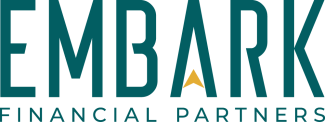
How to Choose the Right Business Tax Structure
Choosing your business entity has many financial components involved. None of which is more important than taxation. As a business owner, optimizing for tax can be the difference in hundreds or often thousands of dollars. To have an optimized tax strategy, you must understand how your business is taxed. The taxation depends on the entity selected. Let's breakdown the 5 main business entities and their taxation structure:
1. Sole Proprietorship:
- All Business income reported on owner's personal tax return.
- Reported on Schedule C of the owner’s personal return.
- The Owner receives 100% of any potential profits and 100% of any potential losses.
- With receiving 100% of any potential profits and losses, any tax liability the owner bears the responsibility.
2. Partnership
- Partnerships are classified as pass-through entities.
- Partners are provided K-1's with their allocated share of the business net income/loss. The amount of business net income/loss is distributed based on each partners ownership percentage.
- Partners report their share of business income/loss under Schedule E on their personal tax return.
- Partners bear the ordinary income tax responsibility of this income/loss.
3. Limited Liability Company (LLC)
- LLC's provide the most taxation flexibility. Owners can decide how they want the business to be taxed.
- The taxation options are sole proprietorship, partnership, S corporation, or C corporation.
- Sole proprietorship, partnership, and S corporation all provide pass-through taxation. This means all business income/loss is distributed to all owner(s) of the LLC. The owner(s) take care of the tax responsibility on their personal tax return.
- C Corporation means business income is taxed and paid by the business. C Corporation is explained below.
- Due to having a choice, owner(s) if they or the business bears the income tax liability. Who pays the tax can go beyond the lowest possible tax liability and may be based on business goals.
4. S-Corp
- S Corporations are pass through entities with shareholders.
- A S-Corp can have no more than 100 shareholders.
- Shareholders receive their share of business net profit/loss on a K-1.
- The K-1 profit/loss is then reported on shareholder's personal return under Schedule E.
- Since it’s reported on Schedule E, the shareholders bear the income tax responsibility on their personal returns.
5. C-Corp
- C Corporations are a separate legal entity that pay their own tax liability.
- Unlike S Corporations, an unlimited number of shareholders can exist.
- C Corporations have their profits taxed at a flat 21% rate.
- C Corporations are subject to double taxation. The corporation pays taxes on profits at a flat 21% rate, and shareholders pay individual income taxes on dividends the corporation distributes.
Combining business goals and expected tax from your net income or loss can crystallize the decision of the right entity for your business. As your business evolves, the entity fit can change too. Armed with knowing and understanding tax liability rules sets the foundation for an optimal tax strategy for your business.
After reading this and you want to analyze your business entity or look for increased tax efficiency, reach out to us. We would happy to partner in finding this answer for you.

